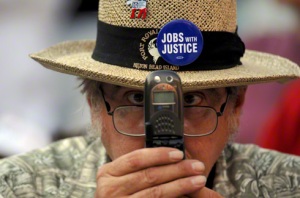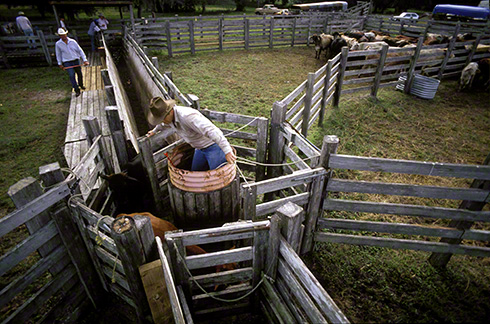 Almost two decades into the Internet revolution few would dispute that the very nature of communication has changed. For centuries professional media of all sorts have relied on a one-way channel between themselves and their audiences. Entertainment, propaganda and information flowed from the top down — from one producer to many recipients who had few ways to talk back. But the appropriately named Web, when combined with powerful, cheap and ubiquitous production tools now in a pocket or purse, has changed communication from one-to-many to many-to-many. This change may be completely irrevocable — a genie out of a bottle.
Almost two decades into the Internet revolution few would dispute that the very nature of communication has changed. For centuries professional media of all sorts have relied on a one-way channel between themselves and their audiences. Entertainment, propaganda and information flowed from the top down — from one producer to many recipients who had few ways to talk back. But the appropriately named Web, when combined with powerful, cheap and ubiquitous production tools now in a pocket or purse, has changed communication from one-to-many to many-to-many. This change may be completely irrevocable — a genie out of a bottle.
Before the turn of the century the media all started working on solutions to hold onto their markets and their revenue streams in the face of this change. They’ve all at one time or another slammed the door with lawsuits or opened the store to encouraged sharing. Advertising has found success in the social nature of this new mediascape, and Hollywood has survived by raising the bar of production values ever higher and learning to tell stories across media in an expansive way. The music and journalism businesses are having a more difficult time of it.
Superficially it appears journalists either ignored the digital age or simply hoped it would go away as legacy news media have never seemed to find a solid foothold in the newer communication model. But, “the problem newspapers face isn’t that they didn’t see the internet coming,” writes New York University’s Clay Shirky in a blog post examining the troubles in the industry. “They not only saw it miles off, they figured out early on that they needed a plan to deal with it, and during the early 90s they came up with not just one plan but several.”
“Convergence” is the term applied to many of these plans, and that term often means different things to different media companies. The earliest idea involved spreading the content of one classic medium to another, such as running a newspaper’s content also on TV, radio and the Web the way the Tribune Company has. Another notion of convergence is the quickly fading “black box” idea where all content will converge onto a single device. And the last is an idea still popular in journalism schools. “Backpack journalists,” carrying still cameras, video and audio equipment and a laptop would produce their stories for multiple media formats from the start.
That last idea was illustrated by New York Times media correspondent and Twitter powerhouse David Carr in an October 2011 interview with Fresh Air host Terry Gross. “I look at my backpack that is sitting here, and it contains more journalistic firepower than the entire newsroom that I walked into 30 to 40 years ago,” he said, describing still and video cameras, audio recorders and computers and their constant connection the vast research repository of the Internet.

Despite this work to spread stories into other media, the story stays the same. Content is simply being repurposed for the new medium rather than being told in a way that uses the advantages of each medium, an idea from which Hollywood and Madison Avenue are moving away in favor of a transmedia approach.
But what’s the point in finding a new place and method for legacy news media in a many-to-many, media-glutted environment? Carr noted in the same interview that although we all have access now to an endless news feed through the Web, social networking and other sources, legacy media could take up the role of looking back to point out what, among that “huge fire hose of data that’s washing over us all,” was important:
All this stuff has gone whizzing past me, and I seem to know a lot, but I don’t really know which part of it is important … I’d go to our page-one meeting and they would be organizing this hierarchy of the six or seven most important stories in Western civilization. Meanwhile the Web is above them pivoting and alighting on all these stories are morphing and changing and I thought, ‘how silly is this?’ But you know what? I came to want that resting place where someone yelled stop and decided, look, this is the stuff you need to know about going forward. There’s both real-time news, and then newspapers have become kind of a magazine experience for me where it’s a way to look back at what has happened.
For a more detailed look into these changes, go to the Where Journalism has Gone Before page linked near the top of the right column or under Contexts at the very top of the page. Read on. Drill deeper.


